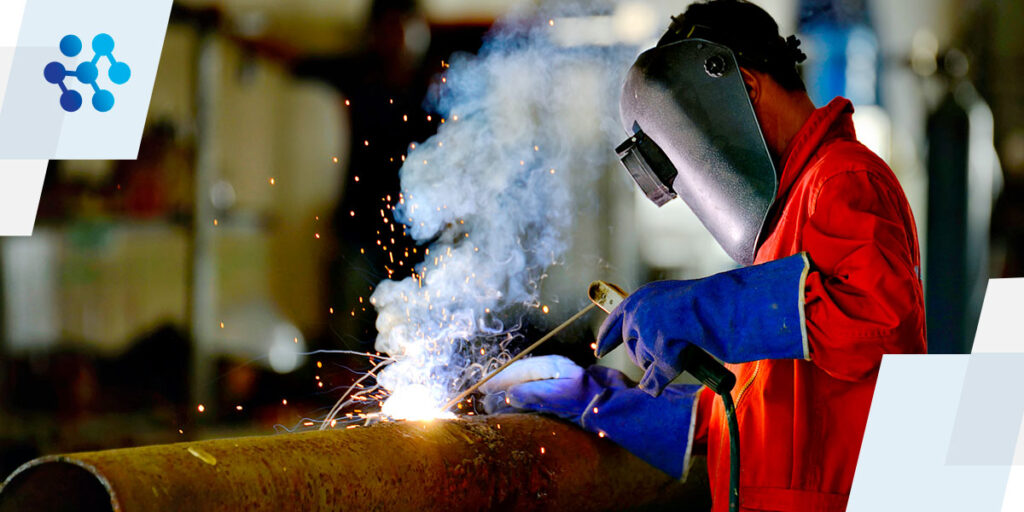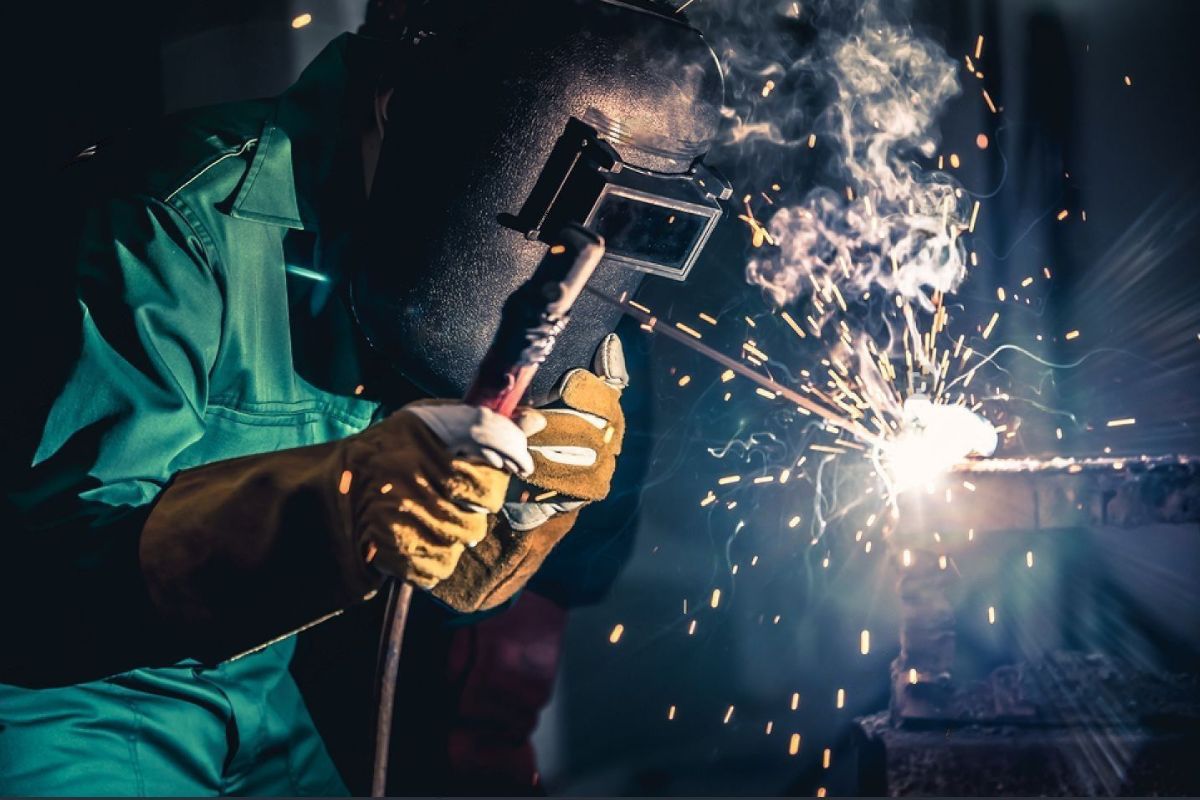What preheat methods can do for distortion prevention in Montana Mobile Welding and Repair Fabrication
Everything about Welding: Secret Insights Into Techniques and Ideal Practices for Success
Welding encompasses a range of techniques, each suited for certain materials and applications. Comprehending these techniques, such as GMAW, SMAW, and TIG, is essential for achieving perfect results. Additionally, the best equipment and safety and security practices can not be overlooked. As prep work and repairing play crucial roles in the welding process, understanding these components can substantially boost the top quality of the final product. What are the key aspects that ensure an effective weld?
Recognizing Various Welding Techniques
Welding techniques incorporate a range of techniques, each matched to certain applications and materials. Among the most typical methods are Gas Metal Arc Welding (GMAW), Shielded Metal Arc Welding (SMAW), and Tungsten Inert Gas Welding (TIG) GMAW, additionally recognized as MIG welding, is popular for its rate and convenience, making it excellent for thin materials. SMAW, or stick welding, is favored for its simplicity and efficiency in outside atmospheres, especially with thicker metals. TIG welding supplies accuracy and control, making it suitable for detailed work and non-ferrous metals (Welding). Each technique has its one-of-a-kind advantages and factors to consider, permitting welders to select the ideal technique based upon the project's requirements, material type, and desired end results. Understanding these techniques is vital for effective welding
Important Welding Equipment and Tools
While different welding techniques require details abilities, the ideal devices and tools are just as vital for attaining high quality results. Essential welding tools consists of welding equipments, which vary relying on the method-- such as MIG, TIG, or stick welding. Safety equipment, consisting of safety helmets, handwear covers, and aprons, warranties security and convenience throughout the procedure. In enhancement, components and clamps aid safeguard products in position, ensuring accuracy in welds. Consumables like welding poles, wire, and shielding gas are likewise important parts that influence the high quality of the weld. Devices such as grinders and cutters help with surface area prep work and post-weld finishing, contributing to an expert end result. Buying top notch equipment ultimately boosts the efficiency and effectiveness of welding projects.
Safety And Security Practices in Welding
Appropriate safety practices are crucial in the welding sector to secure employees from possible risks. Welders need to wear suitable personal protective equipment (PPE), consisting of safety helmets with correct shading, handwear covers, and flame-resistant apparel. Sufficient ventilation is important to reduce exposure to harmful fumes and gases produced during the welding procedure. In addition, workers ought to be learnt the appropriate handling of welding tools to avoid accidents. Fire safety and security measures, such as maintaining flammable materials far from the welding location and having fire extinguishers easily available, are required. Normal assessments of equipment and work areas can help recognize prospective threats before they bring about accidents. By adhering to these security techniques, welders can develop a safer working setting and minimize risks connected with their profession.
Preparing Materials for Welding
Preparing materials for welding is an essential step that greatly influences the quality and stability of the end product (Montana Mobile Welding and Repair Welding). Proper preparation includes cleaning the surfaces to get rid of pollutants such as dust, oil, and rust, which can jeopardize the weld. Methods such as grinding, fining sand, or utilizing solvents are typically utilized to attain a clean surface area. Additionally, making sure that the materials mesh snugly is vital; voids can lead to weak welds. It's likewise essential to take into consideration the placement and positioning of the elements, as this will certainly affect the convenience of welding and the final end result. Picking the appropriate filler material and guaranteeing compatibility with the base metals is vital for accomplishing solid, durable welds.
Tips for Achieving High-Quality Welds
Attaining top quality welds calls for interest to information and adherence to best practices throughout the welding process. Appropriate joint preparation is crucial, ensuring surface areas are free and tidy from impurities. Choosing the appropriate filler material and welding method based upon the base steels is crucial for excellent bonding. Keeping constant traveling speed and angle while welding my review here can promote and stop flaws uniformity. Furthermore, managing heat input is necessary; extreme heat can cause bending and weakened joints. If needed, routinely inspecting the welds throughout the process enables for instant adjustments. Lastly, utilizing ideal post-weld therapies, such as cleansing and stress relief, can improve the toughness and integrity of the weld, ultimately making sure a successful outcome.
Troubleshooting Common Welding Issues
Welding usually offers difficulties that can affect the high quality and honesty of the end product. Common problems such as porosity, irregular weld grains, and overheating can arise, each calling for specific troubleshooting techniques. Recognizing these troubles is important for welders to enhance their skills and attain ideal outcomes.
Porosity Issues Described
Although porosity can frequently be overlooked, it stays a vital concern in welding that can jeopardize the stability of a finished product. Porosity refers to the presence of small gas pockets within the weld bead, which can lead and compromise the joint to premature failure. This issue generally emerges from pollutants, dampness, or improper protecting gas coverage during the welding process. To reduce porosity, welders ought to verify that the base products are tidy and dry, use proper securing gases, and keep regular welding specifications. Frequently evaluating the equipment and environment can additionally aid determine possible problems before they show up in the weld. Attending to porosity effectively is important for attaining solid, durable welds that meet high quality requirements.

Inconsistent Weld Beads
Inconsistent weld beads can greatly affect the top quality and strength of a completed item. Various variables add to this concern, consisting of incorrect travel speed, wrong amperage settings, and inconsistent electrode angles. When the welder moves too quickly, a grain site link may show up slim and do not have infiltration, while moving as well slowly can cause extreme accumulation. Additionally, utilizing the wrong amperage can result in either damaging or too much spatter, both of which compromise weld honesty. The welder's technique, such as irregular lantern movement, can likewise bring about irregular bead appearance. To mitigate these problems, welders should focus on keeping stable, controlled activities and making certain appropriate equipment setups to achieve harmony in their welds. Uniformity is crucial to achieving strong and reliable welds.
Getting Too Hot and Warping Issues
Excessive heat throughout the welding process can bring about considerable overheating and contorting problems, impacting the architectural honesty of the workpiece. These troubles commonly show up as distortion, which can jeopardize alignment and fit-up, making more setting up challenging. Aspects adding to overheating consist of the choice of welding criteria, such as voltage and travel speed, along with the kind of material being bonded. To mitigate these issues, welders must preserve regular traveling rate and suitable warm input while checking the workpiece temperature. Furthermore, preheating or post-weld warmth treatment can aid alleviate stresses triggered by rapid cooling - Montana Mobile Welding and Repair Belgrade Welding. Routine assessment and adherence to ideal methods are vital in avoiding overheating and guaranteeing the durability and reliability of bonded frameworks
Regularly Asked Questions
What Are the Profession Opportunities in the Welding Industry?
The welding industry provides varied career opportunities, consisting of settings as welders, examiners, instructors, and designers. Experts can work in manufacturing, building and construction, aerospace, and vehicle sectors, profiting from solid demand and competitive wages in different duties.
How Can I Improve My Welding Rate Without Compromising Top Quality?
To enhance welding speed without giving up quality, one must exercise effective strategies, maintain devices, maximize setups, and boost hand-eye coordination. Regular training and looking for responses can additionally significantly contribute to achieving faster, high-grade welds.
What Qualifications Are Readily Available for Welders?
Countless qualifications exist for welders, including those from the American Welding Culture (AWS), the National Facility for Building Education And Learning and Research (NCCER), and different industry-specific companies. These credentials enhance employability and show ability efficiency.
Just How Does Welding Influence the Properties of Metals?
Welding affects the properties of steels by modifying their microstructure, which can lead to modifications in firmness, strength, and ductility. Heat input and air conditioning rates during the process greatly affect these material features.
Can I Weld Dissimilar Metals Together?
